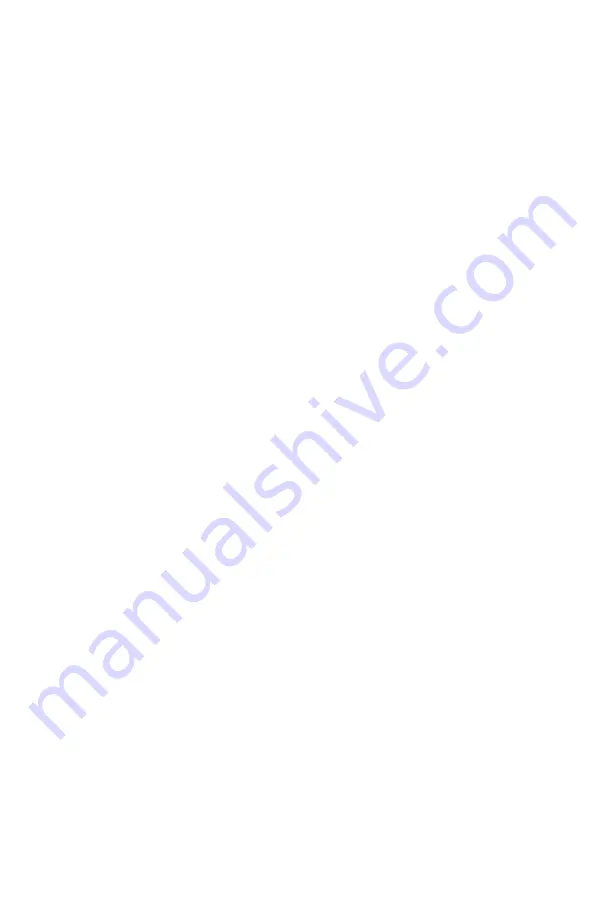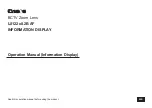
12
• Always remove, clean, rinse, enzyme and disinfect
your lenses according to the schedule prescribed
by your eye care professional. The use of an
enzyme or any cleaning solution does not substitute
for disinfection.
• Do not use saliva or anything other than the
recommended solutions for lubricating or rewetting
your lenses. Do not put lenses in your mouth.
• Lenses prescribed in a frequent replacement
program should be thrown away after the
expiration of the wearing period prescribed by your
eye care professional.
• Never rinse your lenses in water from the tap. There
are two reasons for this:
a. Tap water contains many impurities that can
contaminate or damage your lenses and may
lead to eye infection or injury.
b. You might lose the lens down the drain.
Note:
Some solutions may perform more than one function in the
care regimen, which will be indicated on the label. Read the
label on the solution bottle, and follow instructions.
•
Clean
one lens first (always the same lens first
to avoid mix ups), rinse the lens thoroughly with
recommended saline or disinfecting solution to
remove the cleaning solution, mucus, and film from
the lens surface. Follow the instructions provided
in the cleaning solution labeling. Put that lens into
the correct chamber of the lens storage case. Then
repeat the procedure for the second lens.
• After cleaning, and rinsing,
disinfect
lenses
using the system recommended by your eye care
professional. Follow the instructions provided in the
disinfection solution labeling.
• To store lenses, disinfect and leave them in the
closed/unopened case until ready to wear. If lenses
are not to be used immediately after disinfection,
you should consult the labeling of the storage
solution for information on lens storage.
• After removing your lenses from the lens case,
empty and rinse the lens storage case with
solution(s) recommended by the lens case
manufacturer; then allow the lens case to air dry.
When the case is used again, refill it with fresh
storage solution. Replace lens case at regular
intervals.
• Your eye care professional may recommend
a lubricating/rewetting solution for your use.
Lubricating/Rewetting
solutions can be used to
wet (lubricate) your lenses while you are wearing
them to make them more comfortable.
2. CHeMICal (noT HeaT) dIsInfeCTIon
• Clean the contact lenses with the cleaning solution
recommended by your eye care professional and
thoroughly rinse them with the recommended
rinsing solution.
•
After cleaning,
and rinsing, to disinfect,
carefully follow the instructions accompanying
the disinfecting solution in the care regimen
recommended by your eye care professional.
• When using hydrogen peroxide lens care systems,
lenses
must be neutralized
before wearing.
Follow the recommendations on the hydrogen
peroxide system labeling.
• Thoroughly rinse lenses with a fresh solution
recommended for rinsing before inserting
and wearing, or follow the instructions on the
disinfection solution labeling.
•
Do not heat the solution and lenses.
• Leave the lenses in the unopened storage case until
ready to put on your eyes.
Caution:
Lenses that are chemically disinfected may absorb
ingredients from the disinfecting solution which may be
irritating to your eyes. A thorough rinse in fresh sterile saline
solution prior to placement on your eye should reduce the
potential for irritation.
3. lens dePosITs and use of
enzyMaTIC CleanIng ProCedure
Enzyme cleaning may be recommended by your
eye care professional. Enzyme cleaning removes
protein deposits on the lens. These deposits cannot
be removed with regular cleaners. Removing protein
deposits is important for the well-being of your lenses
and eyes. If these deposits are not removed, they can
damage the lenses and cause irritation.
Enzyme cleaning does NOT replace routine cleaning
and disinfecting. For enzyme cleaning, you should
carefully follow the instructions in the enzymatic
cleaning labeling.
4. lens Case CleanIng
and MaInTenanCe
Contact lens cases can be a source of bacteria
growth. Lens cases should be emptied, cleaned,
rinsed with solutions recommended by the lens case
manufacturer, and allowed to air dry each time you
remove the contact lenses from it. Lens cases should
be replaced at regular intervals.
5. Care for a sTICKIng
(nonMovIng) lens
It is important to the health of your eyes that your
contact lenses move freely. If a lens sticks (stops
moving), put a few drops of the lubricating or rewetting
solution recommended by your eye care professional
into your eye. In this case, do not use plain water or
anything other than the recommended solutions. Do
not attempt to remove a lens that is sticking, which
could damage your eye. If the lens does not begin to
move when you blink after several applications of the
solution or drops, contact your eye care professional
immediately. Do not attempt to remove the lens except
on the advice of your eye care professional.





























